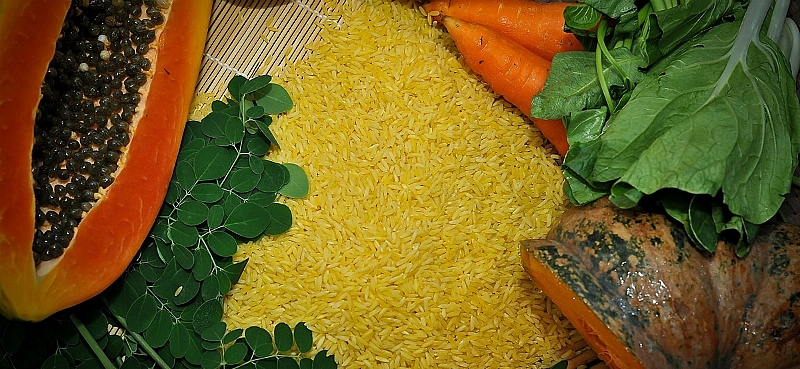Australia and New Zealand gave a nod to Golden Rice
 |
| Australia and New Zealand assent to Golden Rice's food safety |
| No potential public health and safety concerns have been identified in the assessment of GR2E. On the basis of the data provided in the present Application, and other available information, food derived from GR2E is considered to be as safe for human consumption as food derived from conventional rice varieties.” |
Recently, Food Standards Australia New Zealand (FSANZ) finallised the regulatory process, following the publication of the Food Standards variance in the Commonwealth of Australia Gazette on February 22.
Specifically, the Australia New Zealand Food Standards Code was added with a new amendment, Amendment No. 177, stating that the food derived from pro-vitamin A rice line GR2E (Golden Rice) - a beta-carotene bio-fortified genetically modified (GM) rice under development at the International Rice Research Institute (IRRI).
Having assessed the new rice line of GR2E in terms of food safety, FSANZ made a conclusion that “No potential public health and safety concerns have been identified in the assessment of GR2E.
On the basis of the data provided in the present Application, and other available information, food derived from GR2E is considered to be as safe for human consumption as food derived from conventional rice varieties.”
Rated as a statement product in the IRRI's Healthier Rice programme, the rice line of GR2E reported to be the first nutritionally enhanced GM rice to be on the receiving end of regulatory approval for food usage.
Likewise, heathier and nutrious rice varieties were claimed to possess lots of potentials to be chosen by the people as due to the rapid growth in rice production and consumption in South Asia and Southeast Asia.
To date, rice varieties which could offer more micronutrients such as zinc, iron and beta-carotene were under the development stage at IRRI, which in turn could much likely minimise nutrient deficiencies. Statistically, nutrient deficiencies such as vitamin deficiency were actively hurting the the physical health of millions of children and pregnant women across the world.
Genetically developed with numerous resemblances with ordinarily-consumed rice varieties, the rice line of GR2E was stated to be a rich source of beta-carotene which could be transferred into the required amount of vitamin A for the human body thanks to the GM process, giving the rice its golden colour.
What the stars mean:
★ Poor ★ ★ Promising ★★★ Good ★★★★ Very good ★★★★★ Exceptional
Related Contents
Latest News
More News
- 72 nations sign landmark Hanoi cybercrime convention (October 26, 2025 | 18:00)
- UN Secretary-General commends Vietnam’s global leadership (October 26, 2025 | 09:00)
- APEC finance ministers convene to tackle regional challenges (October 22, 2025 | 17:31)
- Rewiring global trade: ASEAN’s rise as supply chain hub (October 17, 2025 | 11:40)
- Vietnam attends first World Nuclear Week Forum in Russia (September 26, 2025 | 10:50)
- Vietnam attends 69th session of IAEA General Conference (September 16, 2025 | 10:00)
- ADB, WB pledge over 12 billion USD for ASEAN power grid, renewable energy projects (August 15, 2025 | 14:18)
- Lowy Institute proposes AI-based tobacco control solutions for ASEAN (August 15, 2025 | 14:14)
- Cloud computing policy to position Malaysia as regional hub by 2030 (August 15, 2025 | 14:11)
- Thailand, Cambodia suffer numerous cyber attacks (August 05, 2025 | 16:19)

 Tag:
Tag:






















 Mobile Version
Mobile Version